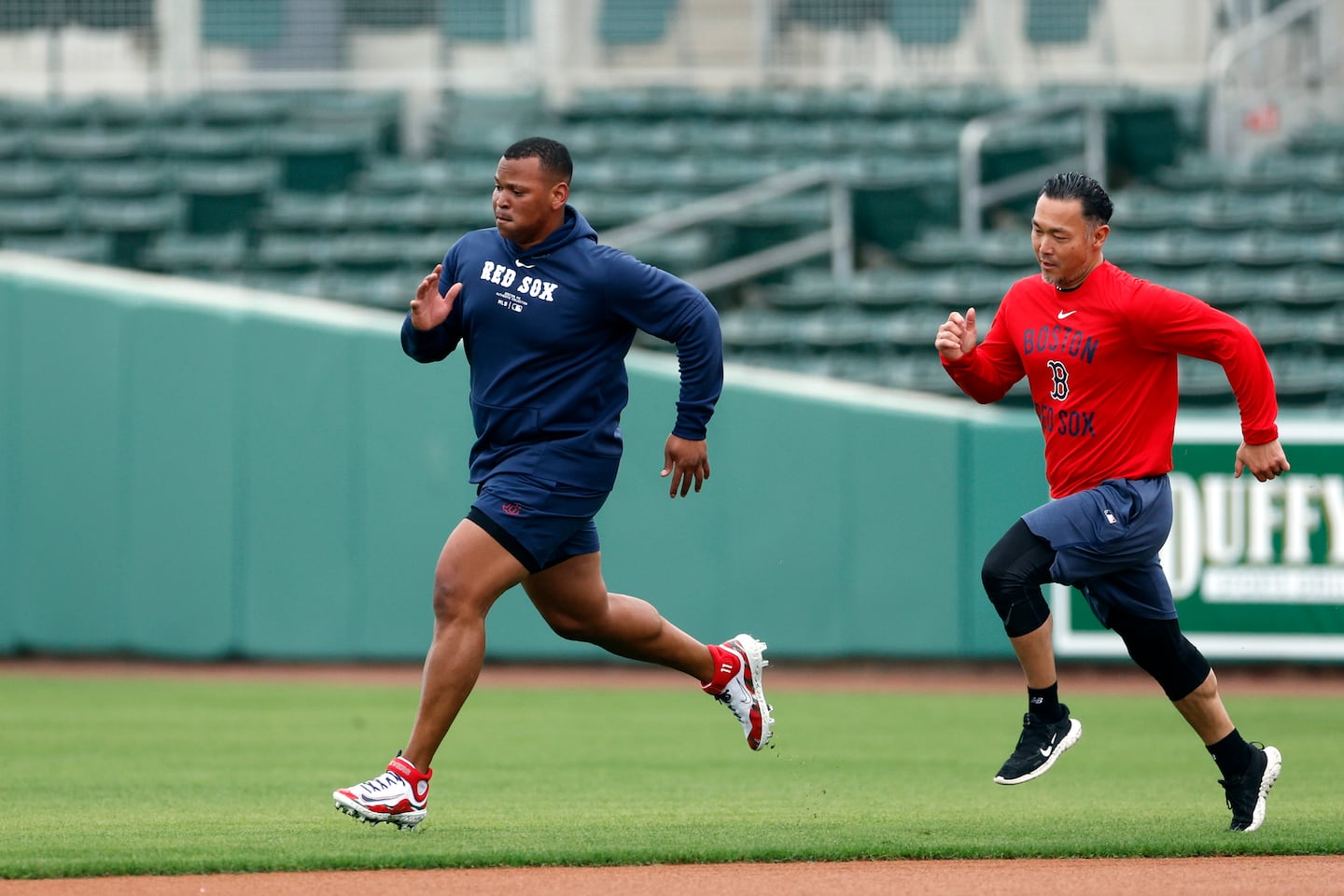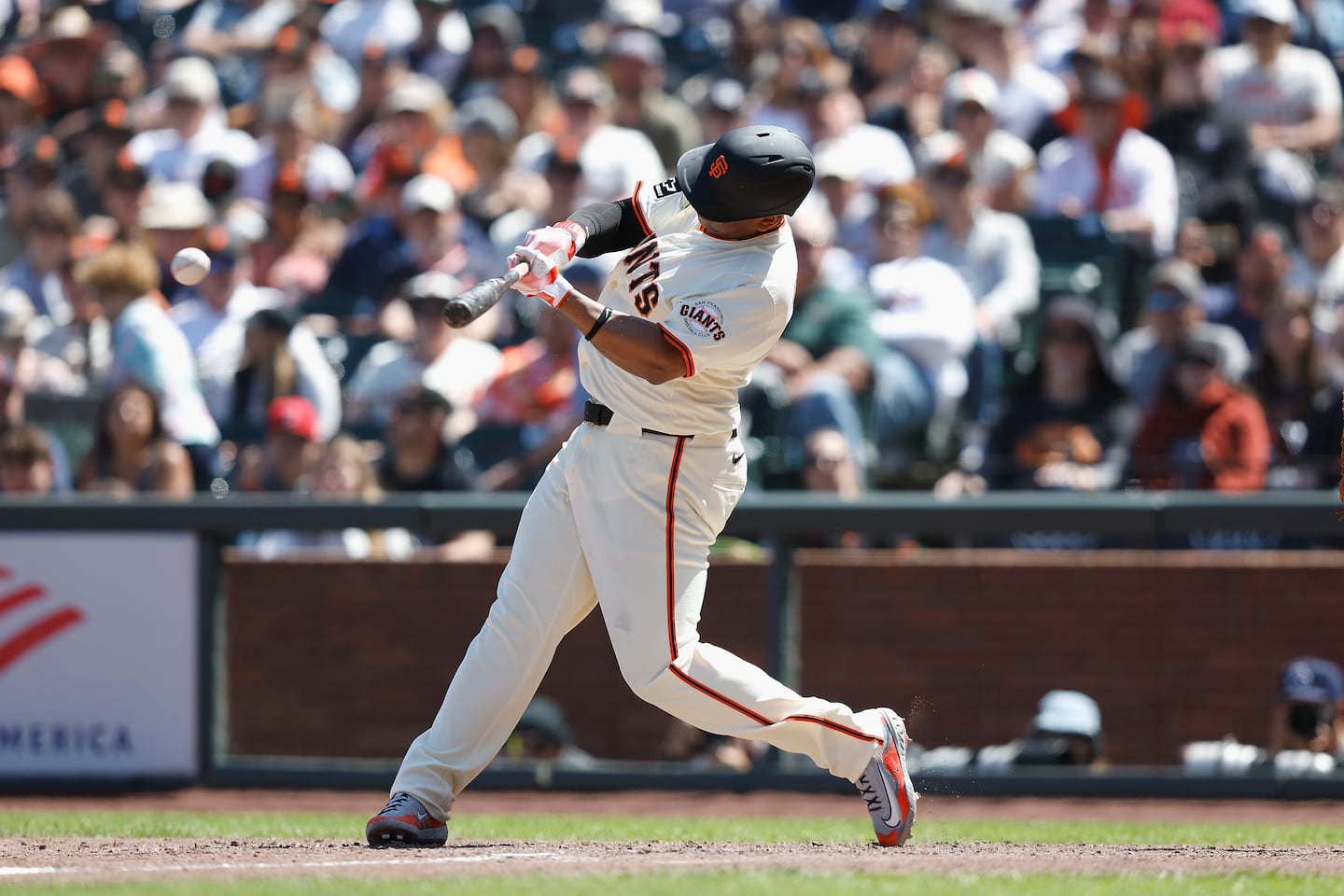It was a deal that shook the baseball world and exposed the deep rift between the Red Sox and their highest-paid player.
“I was surprised when it happened but I knew it was coming,” Devers said Thursday. “I know the business of baseball.
“I saw it happen with Mookie [Betts] when he got traded. That kind of prepared me for what happened.”
Based on conversations with Devers, executives from both teams, Red Sox players and coaches, and others from around baseball, details of the split emerged.
The day after Casas was injured, a few hours before the Sox played the Twins, Devers sat alone in the home dugout in a state of evident and significant distress.
He had his head in his hands at times and waved off anyone who approached.
According to a source, Devers had not yet been asked by chief baseball officer Craig Breslow about playing first base in place of Casas, but he recognized the likelihood that such a request could be forthcoming.
Devers was uncomfortable with the idea that he might fail at the position or be painted as selfish if he declined to try.
There was some hope within the coaching staff that Devers would recognize the team’s need and volunteer to play first base. He was the logical choice.
When that didn’t happen, Breslow approached Devers a few days later and was rebuffed.
It was another chapter in a feud with Breslow that went back to spring training when Devers initially refused to move off third base after Alex Bregman was signed.

That led to principal owner John Henry making an unscheduled trip to Kansas City on May 9 to meet with the player he had signed to a $313.5 million contract extension in 2023.
Henry, who also owns the Globe, declined comment that day. But nothing was accomplished beyond a loose promise to continue talking.
“They wanted me to play first base. I told [Henry] they eventually, yes. I could play first base but maybe next year. It was not my fault that players get hurt,” Devers said. “I felt like if another player got hurt, they would move me again.”
Ultimately, the failed meeting in Kansas City was a demarcation point that led Devers to the Giants as the Sox began to reach out to teams regarding a trade.
Giants president of baseball operations Buster Posey said the trade took 3-4 weeks to complete, a process that started with executives from both teams having discussions, before Posey and Breslow finished it alone.
“They were motivated and we definitely were,” Posey said.
The Sox locked in on 23-year-old lefthander Kyle Harrison while the Giants wanted the Sox to take on the contract of righthander Jordan Hicks.
Hicks had been signed to a four-year, $44 million deal before the 2024 season, the Giants believing he could pitch in their rotation after working in relief for the Cardinals and Blue Jays.
That experiment, a product of the previous regime, was something Posey wasn’t invested in.
Had the Sox not taken Hicks and his remaining salary, the Giants would have wanted approximately $30 million to pay off a portion of Devers’s salary. The Sox chose Hicks.
Breslow also sought first baseman Bryce Eldridge, a first-round pick in 2023. The Giants balked and the Sox pressed for outfielder James Tibbs, San Francisco’s first-round pick in 2024.
The Giants included 20-year-old righthander Jose Bello in the deal.
Dating back to spring training, the Sox had contacted a number of teams about Devers after he insisted he would play third base even after the signing of Bregman. After several weeks of needless drama, Devers agreed to DH.
“I was fine with that,” he said. But cracks in his relationship with the team had formed that would grow larger over time.
Multiple industry sources said the Sox had been in touch with the Padres, Mariners, Cubs, Blue Jays, and Braves about Devers, before consummating the Giants deal.
As a trade was being discussed, Devers steadily withdrew from the day-to-day culture of the Red Sox, typically arriving at the ballpark just before the start of team activities for the day.
Devers would dress while keeping his AirPods in, a silent message that he wasn’t interested in speaking to anybody.
Once the game ended, he would dress quickly and leave.
The Red Sox became concerned that Devers would have a negative impact on rookies Roman Anthony, Marcelo Mayer, and Kristian Campbell, who were all on the major league roster by June 9, when Anthony was called up.
“As we think about the identity and the culture and the environment that is created by great teams, there was something amiss here,” Breslow said.
But Devers’s play never wavered. He hit .291 with a .986 OPS, 16 extra-base hits, and 33 RBIs over 37 games following that meeting with Henry in Kansas City.
Despite his on-field excellence, Devers continued to withdraw off the field. To the team’s frustration, he wouldn’t conduct even perfunctory postgame interviews with NESN.
Devers did agree to speak after hitting a walkoff homer to beat the Braves on May 17.
“It’s very exciting,” he said with a smile.
But Devers did not take questions again until June 11, when a Globe reporter approached him after a victory against the Rays.
He praised Anthony and Mayer as good additions to the team and suggested the Sox could get hot.
“I like the way the team looks,” Devers said. “We’re going in the right direction.”
Four days later, he was a Giant.
Devers homered in his last game as a member of the Red Sox, helping them beat the Yankees. He told reporters afterward that his issues with the team “were in the past,” then boarded the team bus to Logan Airport.
Then it got awkward. The traveling party was on the plane when the trade was finalized. Take off was delayed as Devers left the plane and returned to Fenway to collect his belongings.
It was a full-circle moment for Devers. In 2014, the Red Sox decided to move him from the Dominican Summer League to the Gulf Coast League in Florida.
But officials at the Red Sox academy learned the 17-year-old Devers had spent the night before his flight partying with teammates. The plane was stopped while taxiing, and Devers was taken off.
He had to wait a few more weeks before making his debut in the United States. This time, he was leaving the only organization he knew.
Rolling out the red carpet
Devers entered a new world when he arrived at Oracle Park on Tuesday.
Smiling team employees lined up to greet Devers when he entered the ballpark, as smoke machines erupted and music played. It looked like a Hollywood premiere.
Inside the ballpark, he was introduced to a crowd that included his new teammates and coaches, and a large group of reporters from the Bay Area.
“The Giants brought me here for a reason and I will give them 100 percent,” Devers said via a translator. “I’m moving forward from the situation in Boston.”
Back on the East Coast, Red Sox legend David Ortiz criticized Devers for not being a team player in a column written by Ken Rosenthal of Fox Sports.

Meanwhile, Devers was standing at a podium thanking home run king Barry Bonds for welcoming him to the Giants.
“I love Papi,” Devers said. “I know he loves the media. He can say anything he wants.”
Later in the day — after Devers spent 15 minutes taking grounders at first base using a borrowed mitt — manager Bob Melvin predicted his new star would flourish on the West Coast.
“We’re going to make it comfortable for him,” Melvin said. “Whatever happened in Boston, that’s in the past. Our guys are thrilled he’s here.”
Why did Devers agree to play first so readily for the Giants?
“I think I can do it,” he said. “This is 100 percent my new team and I am here and I am willing to whatever they want.”
The Giants have spacious accommodations compared with the tight quarters at Fenway Park. Devers was given two lockers, plenty of room for his bats, cleats, and two large suitcases.
Gone were all his Red Sox T-shirts and workout clothes in various combinations of red and blue. They were replaced by the black and orange gear of the Giants.
Other than his baseball equipment, the one item that made the trip from Fenway Park was a half-empty plastic jar of Skittles candy.
That seemed fitting.
Devers is 28, wealthy beyond his childhood dreams, and suddenly a San Francisco celebrity.
But part of him is still the candy-chomping kid with the sweet swing who always seemed to be having fun, even if those simpler times have long vanished, never to return.
Peter Abraham can be reached at peter.abraham@globe.com. Follow him @PeteAbe. Alex Speier can be reached at alex.speier@globe.com. Follow him @alexspeier.
This post was originally published on this site be sure to check out more of their content.







